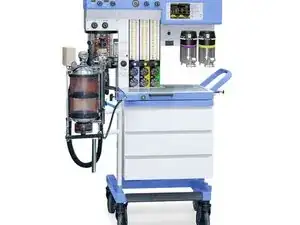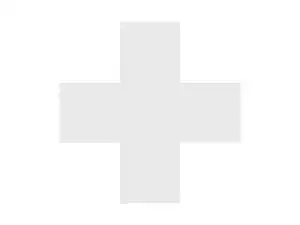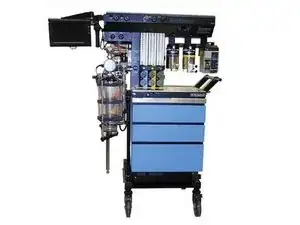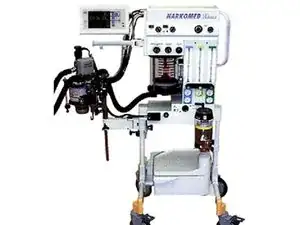Background
The Narkomed GS anesthesia machine was introduced in 1997 by North American Dräger (NAD) following the Narkomed 4, which had a more compact design with a single monitoring screen and a simplified user interface.In 1999, NAD merged with Dräger to form Draeger Medical, Inc. Some Narkomed GS machines were produced by NAD and others by Draeger Medical. production of the GS ended in 2006. The GS had a simplified monitoring system compared to the Narkomed 2 through 4 and was the last Narkomed to use the AV2+ ventilator. the machine pictured was once part of NAD's James Yoder teaching collection, which became the basis for a museum at NAD headquarters in Telford, Pennsylvania.
Source:
Drager Narkomed GS history and record
Identification
The Drager Narkomed GS anesthesia machine is a large medical device that is typically placed on a wheeled cart or platform. the gas delivery system of the Narkomed GS includes an oxygen flow meter, a nitrous oxide flow meter, and a series of pressure gauges and valves. The machine is equipped with one or more vaporizers for delivering anesthetics, such as isoflurane or sevoflurane, into the gas mixture.The Narkomed GS uses a breathing circuit to deliver the gas mixture to the patient. The circuit typically includes a patient circuit, a carbon dioxide absorber, and a purge system to remove excess gas. The machine is equipped with various monitoring systems, including a pulse oximeter to measure blood oxygen levels, a carbon dioxide meter to measure carbon dioxide levels, and a respiratory rate monitor.The Narkomed GS has a control panel that allows the anesthesiologist or other medical professional to adjust the gas mixture and other settings.
Source:
Drager Narkomed GS Model Information
Technical Specifications
General
- Dimensions: 50" (H) x 24" (W) x 35" (D)
- Weight: 225 lbs
- Power supply: 100-120/220-240 VAC, 50/60 Hz, 15A
- Battery backup: 1-hour minimum
- Gas supply pressure: 50-55 psi
- Oxygen flush: 35-75 L/min
- Inspiratory pressure limit: 10-75 cmH2O
- Inspiratory time: 0.2-4.0 seconds
- Expiratory time: 0.2-4.0 seconds
- Respiratory rate: 4-60 breaths/min
- Tidal volume: 20-1500 ml
- Inspiratory flow: 2-100 L/min
- Oxygen monitoring range: 0-100%
- CO2 monitoring range: 0-99 mmHg
- N2O monitoring range: 0-100%
- Anesthetic agent monitoring: Halothane, Isoflurane, Enflurane, Sevoflurane, Desflurane, and N2O
- Ventilation modes: Volume control (AV2+ ventilator), Pressure control (with external ventilator), and Manual
- Alarms: High/low airway pressure, High/low oxygen, High/low tidal volume, Apnea, High CO2, and Loss of power or battery charge.
Source:
Dragon Narkomed GS User Manual



